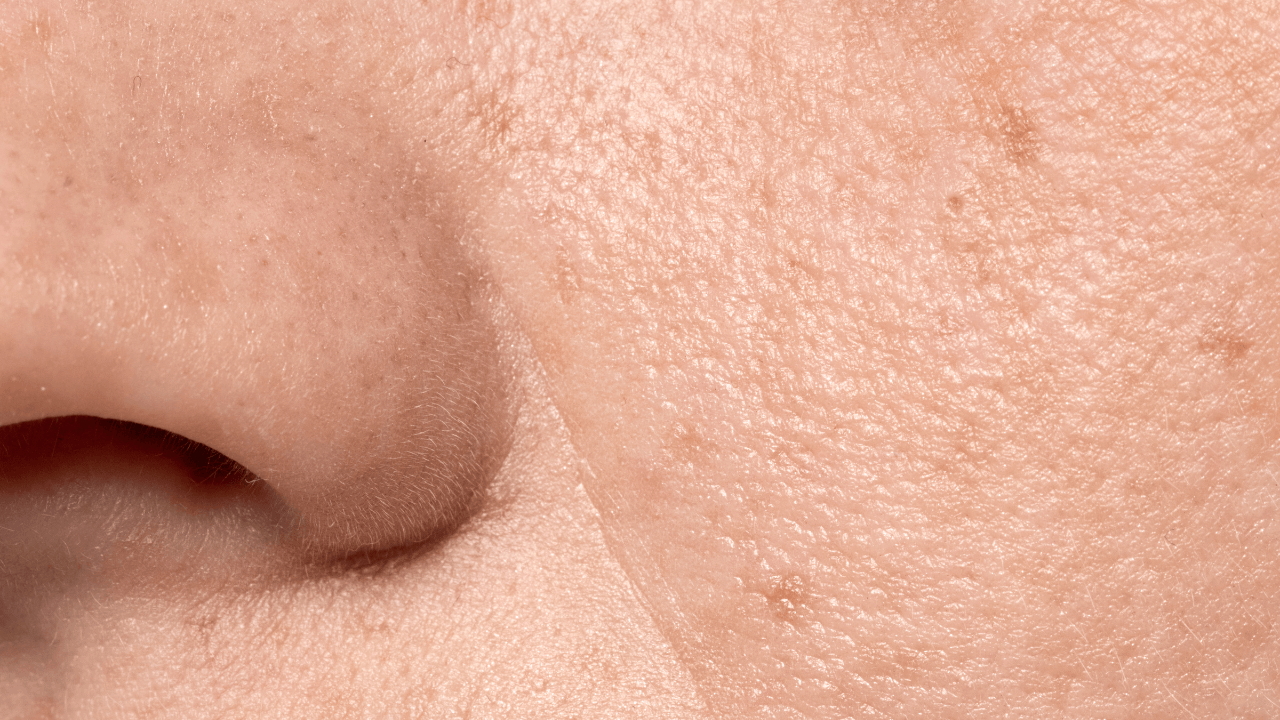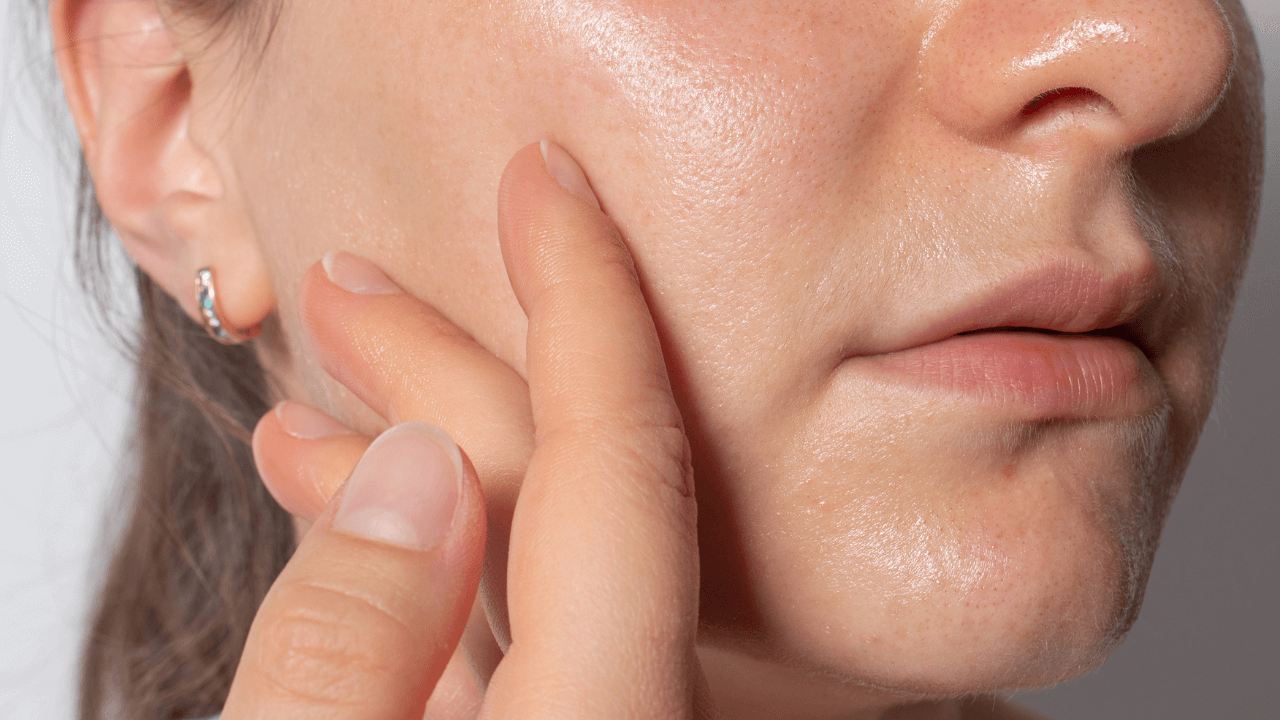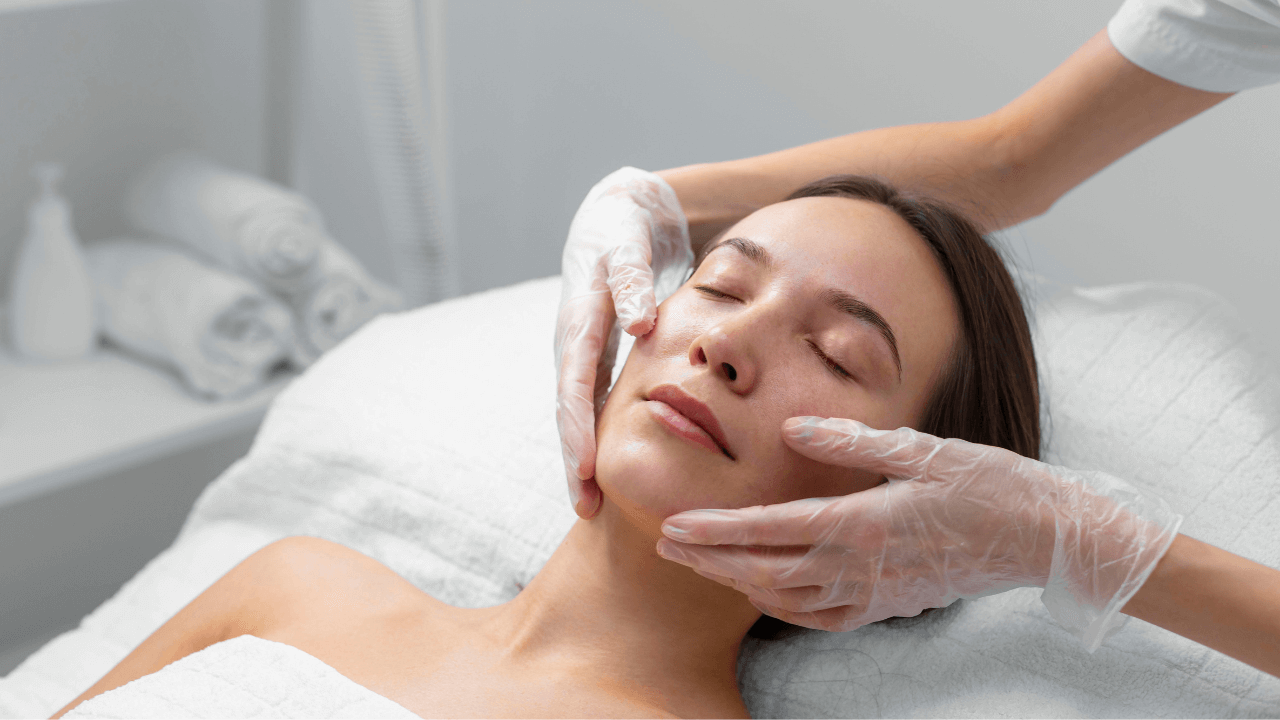Understanding Niacinamide: A Powerful Vitamin for Complete Skin Transformation
Niacinamide (Vitamin B3) stands as one of skincare's most versatile and well-researched ingredients, offering an impressive array of benefits that address multiple skin concerns simultaneously. This water-soluble vitamin has gained tremendous popularity in modern skincare formulations due to its remarkable ability to improve skin function at the cellular level while being exceptionally well-tolerated by nearly all skin types.
What distinguishes niacinamide from many other active ingredients is its unique combination of potency and gentleness. While ingredients like retinol or vitamin C can sometimes cause irritation during the adjustment period, niacinamide delivers significant benefits with minimal risk of sensitivity, making it suitable for even the most reactive skin types. This rare balance of effectiveness and tolerability has established niacinamide as a cornerstone ingredient in dermatologist-recommended skincare routines.
The multifunctional nature of niacinamide allows it to address seemingly contradictory skin concerns – it can hydrate dry skin while simultaneously regulating excess oil production in oily areas, making it particularly valuable for combination skin types. Its ability to strengthen the skin barrier, reduce inflammation, brighten discoloration, and refine texture creates a comprehensive improvement in skin health and appearance that few single ingredients can match.

The Biochemistry Behind Niacinamide's Effectiveness
Niacinamide's skin benefits stem from its role as a precursor to two essential coenzymes in the body: nicotinamide adenine dinucleotide (NAD+) and its phosphate form (NADP+). These coenzymes are vital for numerous cellular processes that directly impact skin health and function:
Cellular Energy Production and Repair
When applied topically, niacinamide is absorbed into skin cells where it converts to NAD+, which plays a critical role in:
-
ATP Production: NAD+ is essential for cellular energy (ATP) generation, providing skin cells with the energy needed for repair and regeneration functions.
-
DNA Repair: NAD+ supports enzymes involved in repairing UV-induced DNA damage, helping prevent premature aging and reducing cancer risk.
-
Cellular Communication: Enhances intercellular signaling that coordinates proper skin barrier function and immune response.
Research published in the Journal of Clinical and Aesthetic Dermatology demonstrates that niacinamide-treated skin shows significantly improved cellular energy metabolism, correlating with enhanced repair capabilities and resistance to environmental stressors.
Barrier Function Enhancement
Niacinamide directly strengthens the skin's protective barrier through multiple mechanisms:
-
Ceramide Synthesis: Stimulates the production of ceramides, essential lipids that form the "mortar" between skin cells, creating an effective moisture barrier. Studies show up to a 50% increase in ceramide production after regular niacinamide application.
-
Fatty Acid Production: Increases levels of free fatty acids in the stratum corneum, enhancing barrier integrity and reducing moisture loss.
-
Protein Synthesis: Boosts production of keratin, filaggrin, and involucrin – structural proteins needed for strong, resilient skin.
Research using transepidermal water loss (TEWL) measurements confirms that niacinamide significantly reduces water loss through the epidermis, creating better-hydrated, more resilient skin.
Melanin Transfer Inhibition
Niacinamide's brightening effects come from its ability to interrupt the pigmentation process:
-
Melanosome Transfer Blockade: Rather than inhibiting melanin production (like hydroquinone), niacinamide prevents the transfer of melanin-containing melanosomes from melanocytes to keratinocytes in the epidermis.
-
Inflammation Reduction: By decreasing inflammatory processes that can trigger melanin production, niacinamide helps prevent post-inflammatory hyperpigmentation.
Clinical studies show visible reduction in hyperpigmentation and more even skin tone after 8-12 weeks of consistent niacinamide use, with benefits continuing to improve over time.
Sebum Regulation and Pore Refinement
Niacinamide offers significant benefits for oily and acne-prone skin:
-
Sebaceous Gland Modulation: Regulates the activity of sebaceous glands, reducing excess sebum production without causing dryness. Research demonstrates up to 54% reduction in sebum excretion rates after 4 weeks of use.
-
Pore Size Reduction: Decreases pore diameter by improving skin elasticity around the pore opening and reducing sebum congestion that can stretch pores.
-
Antimicrobial Properties: Exhibits mild antimicrobial activity against P. acnes bacteria, complementing its anti-inflammatory effects for acne management.
The Science-Backed Benefits of Niacinamide
1. Superior Anti-Inflammatory Properties
Niacinamide's anti-inflammatory effects make it invaluable for various inflammatory skin conditions:
-
Cytokine Modulation: Suppresses pro-inflammatory cytokines that contribute to skin redness and irritation.
-
Mast Cell Stabilization: Prevents mast cells from releasing histamine and other inflammatory mediators, reducing reactivity and sensitivity.
-
Antioxidant Support: Enhances the skin's natural antioxidant capacity, neutralizing free radicals that trigger inflammation.
These mechanisms make niacinamide particularly effective for conditions like rosacea, acne, and eczema, with clinical studies showing significant reductions in redness and irritation with consistent use.
2. Comprehensive Brightening and Even Tone
Niacinamide addresses multiple causes of uneven skin tone:
-
Hyperpigmentation Reduction: Inhibits melanosome transfer to visibly fade existing dark spots over time.
-
Sun Damage Repair: Supports cellular repair processes to address UV-induced discoloration.
-
Inflammation Prevention: Reduces the inflammatory response that can trigger post-inflammatory hyperpigmentation.
-
Barrier Strengthening: Improves barrier function, which helps prevent external triggers of pigmentation from affecting melanocytes.
Clinical research demonstrates that 5% niacinamide significantly reduced hyperpigmentation and increased skin brightness after 12 weeks, with effects comparable to 4% hydroquinone but with superior tolerability.
3. Balanced Oil Production and Acne Prevention
Niacinamide's regulatory effect on sebaceous glands provides multiple benefits for acne-prone skin:
-
Sebum Normalization: Reduces excess oil production while maintaining necessary hydration.
-
Pore Decongestion: Helps prevent the buildup of sebum and dead skin cells that lead to comedones.
-
Inflammation Control: Calms the inflammatory response associated with acne lesions, reducing redness and swelling.
-
Barrier Repair: Strengthens the compromised skin barrier often seen in acne-prone skin, preventing moisture loss and irritation.
Studies published in the International Journal of Dermatology show that 4% niacinamide gel was comparable to 1% clindamycin (a topical antibiotic) in reducing acne lesions, without contributing to antibiotic resistance.
4. Advanced Barrier Protection and Hydration
Niacinamide provides comprehensive support for the skin's protective barrier:
-
Ceramide Enhancement: Stimulates the production of ceramides, critical lipids that maintain barrier integrity.
-
Moisture Retention: Improves the skin's ability to hold water, creating lasting hydration.
-
Environmental Defense: Strengthens barrier function to better resist pollutants, irritants, and pathogens.
-
Protein Synthesis: Increases production of essential structural proteins needed for barrier health.
Research using advanced imaging techniques has shown measurable improvements in barrier thickness and integrity after regular niacinamide application, correlating with reduced sensitivity and improved hydration.
5. Texture Refinement and Pore Appearance
Niacinamide creates smoother, more refined skin texture through multiple mechanisms:
-
Stratum Corneum Enhancement: Improves the structure and function of this outer skin layer, creating a smoother surface.
-
Elastic Tissue Support: Enhances elastin production and protects existing elastic fibers from degradation.
-
Cellular Turnover Support: Optimizes the skin renewal process for more consistent surface texture.
-
Pore Elasticity: Improves the elasticity of pore openings, helping them appear smaller and less noticeable.
Clinical evaluations have demonstrated significant improvements in skin texture parameters, including roughness, smoothness, and pore visibility after 8-12 weeks of consistent niacinamide use.
Optimal Usage and Application Strategies
Concentration Guidelines for Maximum Efficacy
Research indicates specific concentration thresholds for different benefits:
-
2-5% Concentration: Effective for barrier repair, hydration, and basic anti-inflammatory benefits. Ideal for sensitive skin or beginners.
-
5% Concentration: The optimal balance point for most users, providing visible results for brightening, pore refinement, and oil control without irritation risk.
-
10% Concentration: Maximum strength for addressing stubborn hyperpigmentation and advanced aging concerns. May cause temporary flushing in some users during initial use.
-
>10% Concentration: Generally not recommended for daily use as benefits plateau while irritation potential increases.
Formulation Considerations
The effectiveness of niacinamide is influenced by product formulation:
-
pH Stability: Niacinamide works optimally in formulations with a pH between 5.0 and 7.0, making it compatible with most skincare products.
-
Water-Based Delivery: As a water-soluble vitamin, niacinamide penetrates best in lightweight serums and lotions rather than heavy oils or balms.
-
Stability Advantages: Unlike vitamin C or retinol, niacinamide is extremely stable in formulations, resistant to light, heat, and air exposure.
-
Penetration Enhancers: Formulations containing penetration enhancers like propylene glycol or butylene glycol can improve niacinamide's ability to reach deeper skin layers.
Integration with Other Skincare Ingredients
Niacinamide enhances or complements many other active ingredients:
Beneficial Combinations:
-
Hyaluronic Acid: Creates comprehensive hydration while niacinamide strengthens the barrier to retain that moisture.
-
Peptides: Provides complementary benefits for skin firming and rejuvenation through different pathways.
-
Ceramides: Enhances niacinamide's barrier-repair functions for superior protection.
-
Retinol: Niacinamide's anti-inflammatory properties can reduce retinol-induced irritation while supporting its cellular renewal benefits.
-
Sunscreen: Enhances photoprotection by supporting barrier function and reducing UV-induced inflammation.
Considerations for Acidic Ingredients:
Early concerns about combining niacinamide with acidic ingredients like vitamin C have largely been disproven by recent research. While niacinamide can convert to nicotinic acid in highly acidic environments (pH <3.5), most modern formulations maintain appropriate pH levels that prevent this conversion. For optimal results:
-
Use vitamin C in the morning and niacinamide in the evening if concerned
-
Wait 15-30 minutes between applications of highly acidic products and niacinamide
-
Look for specially formulated products that stabilize both ingredients together
Time of Day Recommendations
Niacinamide can be beneficially used in both morning and evening routines:
Morning Application:
-
Provides antioxidant protection throughout the day
-
Helps control oil production during waking hours
-
Enhances the skin's resilience against environmental stressors
-
Pairs well with sunscreen for improved photoprotection
Evening Application:
-
Supports overnight barrier repair processes
-
Complements the skin's natural regeneration cycle
-
Can be used alongside other treatment products like retinoids
-
Helps calm and soothe skin after daytime exposure to irritants
For maximum benefits, consistent twice-daily application is ideal, but even once-daily use will provide significant improvements over time.
Addressing Various Skin Concerns with Niacinamide
For Sensitive and Reactive Skin
Sensitive skin particularly benefits from niacinamide's gentle yet effective approach:
-
Barrier Reconstruction: Rebuilds compromised barrier function that contributes to reactivity and sensitivity.
-
Anti-Inflammatory Action: Calms redness and irritation without harsh ingredients that might trigger reactions.
-
Gentle Brightening: Provides more tolerable pigmentation control than acids or retinoids.
-
Rosacea Management: Clinical studies show significant improvement in rosacea symptoms with regular niacinamide use.
Application Tips: Start with lower concentrations (2-5%) and fragrance-free formulations. Apply to slightly damp skin to enhance absorption while minimizing potential irritation.
For Acne-Prone and Oily Skin
Niacinamide addresses multiple factors that contribute to acne:
-
Sebum Regulation: Controls excess oil production that can lead to clogged pores.
-
Anti-Inflammatory Properties: Reduces redness and swelling of existing breakouts.
-
Antimicrobial Support: Offers mild antimicrobial benefits that complement other acne treatments.
-
Pore Refinement: Decreases the appearance of enlarged pores often associated with acne-prone skin.
-
Pigmentation Control: Helps fade post-acne marks and prevents new discoloration from forming.
Application Tips: Look for oil-free, non-comedogenic formulations. Can be used alongside traditional acne treatments like benzoyl peroxide or salicylic acid (in separate applications to prevent potential irritation).
For Mature and Aging Skin
Niacinamide offers comprehensive anti-aging benefits:
-
Collagen Support: Protects existing collagen from degradation while supporting new production.
-
Elastin Protection: Helps maintain skin elasticity and firmness.
-
Cellular Energy Enhancement: Improves cellular metabolism for more efficient repair and renewal.
-
Brightening Effects: Addresses age spots and uneven tone common in mature skin.
-
Barrier Strengthening: Counteracts the natural barrier deterioration that occurs with age.
Application Tips: Higher concentrations (5-10%) provide more intensive benefits. Pair with complementary ingredients like peptides, ceramides, and antioxidants for enhanced age-management results.
Safety Profile and Potential Side Effects
Niacinamide boasts an excellent safety record with minimal side effects:
Common Experiences:
-
Temporary Flushing: Some users experience brief redness or warmth upon initial application, especially at higher concentrations. This typically resolves within 10-15 minutes and diminishes with continued use.
-
Mild Tingling: A slight tingling sensation may occur initially but usually disappears as the skin adapts to the ingredient.
Rare Side Effects:
-
Contact Dermatitis: Extremely uncommon but possible allergic reaction characterized by persistent redness, itching, or rash.
-
Dryness: Some users may experience mild dryness at very high concentrations (>10%).
Precautions for Sensitive Skin:
-
Start with lower concentrations (2-5%)
-
Conduct a patch test before full-face application
-
Introduce gradually, beginning with every other day usage
-
Look for formulations without potential irritants like alcohol, fragrance, or essential oils
Selecting Quality Niacinamide Products
When evaluating niacinamide-containing products, consider these factors:
Concentration and Formulation
-
Disclosed Percentage: Choose products that clearly state the niacinamide concentration to ensure you're getting an effective amount.
-
Supporting Ingredients: Look for complementary ingredients like ceramides, peptides, hyaluronic acid, or antioxidants that enhance benefits.
-
Texture Preference: Consider whether you prefer a lightweight serum, toner, or more substantial cream formula based on your skin type and concerns.
-
pH-Balanced Formulation: Optimal formulations maintain a pH between 5.0-7.0 for maximum stability and efficacy.
Product Format Recommendations
Different delivery systems offer unique advantages:
-
Serums: Provide highest concentration and deepest penetration. Ideal for targeting specific concerns like hyperpigmentation or signs of aging.
-
Moisturizers: Combine hydration with niacinamide's barrier-strengthening benefits. Excellent for dry or sensitive skin types.
-
Toners: Offer gentle introduction to niacinamide in lower concentrations. Good for beginners or those with very sensitive skin.
-
Masks: Provide intensive, occasional treatment. Beneficial for periodic skin rebalancing and brightening.
Storage and Stability
Unlike many active ingredients, niacinamide offers excellent stability:
-
Resistant to degradation from light exposure
-
Maintains potency at room temperature
-
Has long shelf life when properly formulated
-
Does not require special packaging to maintain efficacy
This stability makes niacinamide products particularly user-friendly, as they do not require the special handling or storage considerations needed for ingredients like vitamin C or retinol.
Integrating Niacinamide into Your Skincare Routine
For optimal results, follow these evidence-based recommendations:
Basic Routine Integration
Morning Routine:
-
Gentle cleanser
-
Niacinamide serum or treatment product
-
Moisturizer (if needed)
-
Broad-spectrum sunscreen
Evening Routine:
-
Double cleanse (oil/balm cleanser followed by water-based cleanser)
-
Treatment products (retinoids, acids, etc., if used)
-
Niacinamide serum
-
Moisturizer
Advanced Multi-Product Approach
For those using a more comprehensive skincare regimen:
Morning Sequence:
-
Gentle cleanser
-
Antioxidant serum (vitamin C if used separately from niacinamide)
-
Niacinamide serum
-
Eye cream
-
Lightweight moisturizer
-
Sunscreen
Evening Sequence:
-
Makeup remover/oil cleanser
-
Water-based cleanser
-
Exfoliant (1-3 times weekly)
-
Treatment serum (retinoid, peptides, etc.)
-
Niacinamide serum
-
Eye cream
-
Moisturizer
-
Facial oil (if needed)
Weekly Additions:
-
Exfoliating treatments (1-2 times weekly)
-
Hydrating or brightening masks containing niacinamide (1-2 times weekly)
Timeline for Visible Results
Understanding the typical progression helps maintain realistic expectations:
-
1-2 Weeks: Initial improvements in hydration and skin softness; potential reduction in oiliness
-
2-4 Weeks: Noticeable calming of redness and irritation; beginning of pore refinement
-
4-8 Weeks: Visible improvement in skin texture and tone; reduction in mild hyperpigmentation
-
8-12 Weeks: Significant brightening of dark spots; enhanced barrier function; substantial improvement in overall skin appearance
-
12+ Weeks: Continued improvement in all parameters with consistent use
Conclusion: Niacinamide's Essential Role in Comprehensive Skin Health
Niacinamide stands as one of the most versatile, well-researched, and universally beneficial ingredients in modern skincare. Its unique ability to address multiple skin concerns simultaneously—from barrier disruption and sensitivity to oil control and hyperpigmentation—makes it valuable for virtually every skin type and concern. Unlike many powerful active ingredients that come with significant adjustment periods or irritation potential, niacinamide delivers impressive results with exceptional tolerability.
The scientific evidence supporting niacinamide's benefits continues to expand, confirming what dermatologists and skincare formulators have long recognized: few ingredients offer such comprehensive skin health support with such minimal drawbacks. Whether incorporated into a minimalist routine or as part of a complex multi-product regimen, niacinamide provides measurable improvements that enhance both the immediate appearance and long-term health of the skin.
For those seeking an evidence-based approach to address multiple skin concerns with a single ingredient, niacinamide represents an optimal balance of efficacy, safety, and versatility. Its ability to strengthen the skin's natural functions while providing visible cosmetic improvements makes it not merely a treatment but an investment in your skin's fundamental health and resilience.





